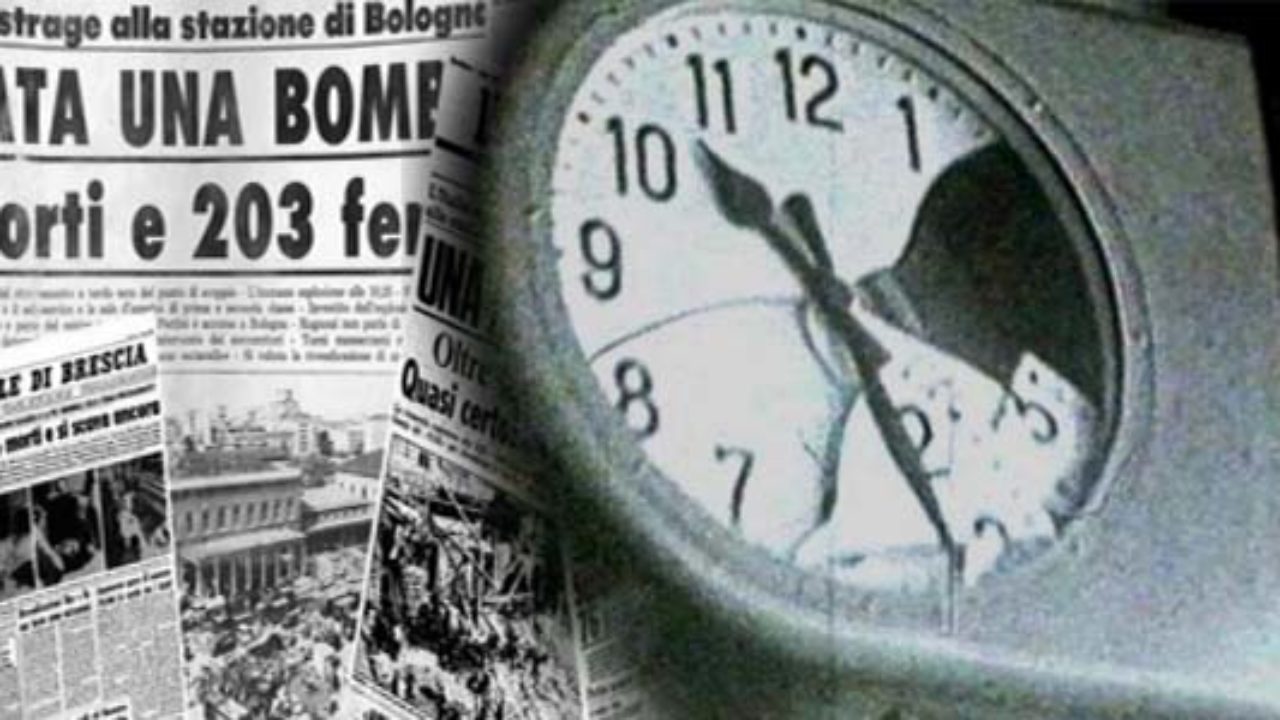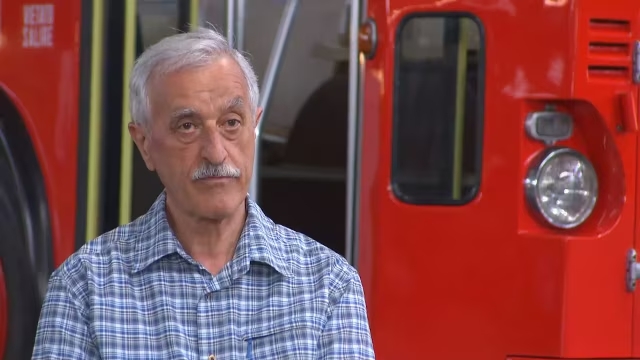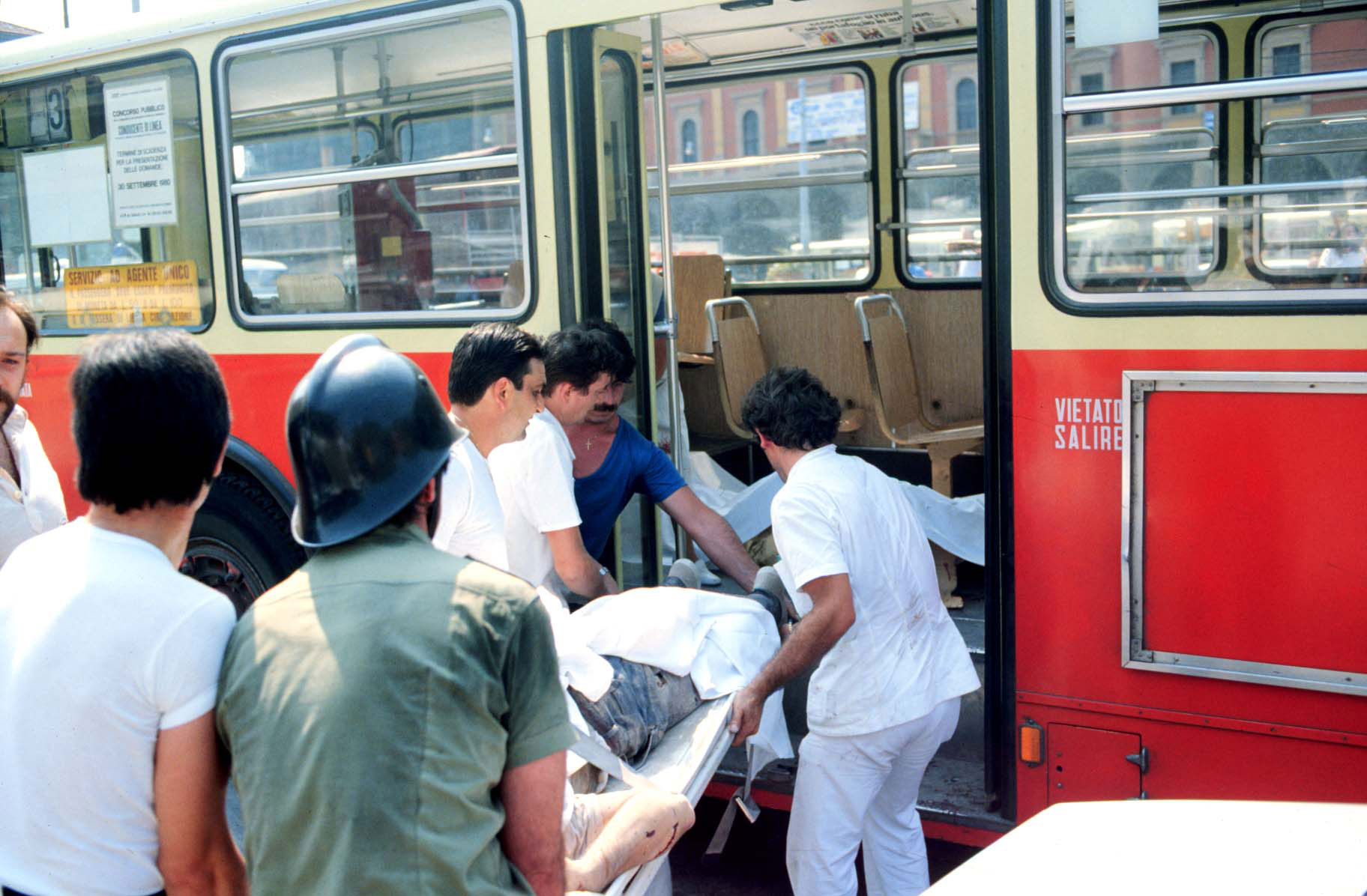I, the driver of bus No. 37: "In the midst of the tragedy, it allowed me to give dignity to death."

"One next to the other, certainly not piled up as might have happened on other occasions. So we laid out the stretchers with the bodies of those who had lost their lives in the explosion. It was our way of showing affection to those who were strangers to us: without needing to tell each other, we wanted to restore to those bodies the dignity that had been erased by the terrorists with the bomb. Because I tell you without fear of contradiction: they were absolutely devastated, almost completely unrecognizable."
Forty-five years have passed since that August 2nd, but Agide Melloni 's vivid memories remain vivid, deeply imprinted in our memory. He delivers them to us like a raging river, conveying, even with numerous pauses, during which he seems to hold his breath, the mind's racing to move from one image to another, trying to avoid the unfortunate ones. Obviously, without success.
He was the driver of bus No. 37, and on August 2, 1980, he continued all day transporting the bodies of the victims from the Bologna train station to the mortuary, until dawn the next day. Not the usual scheduled service, but an arduous shuttle with the task of protecting very special passengers. And he did so despite the moment leaving no room for any other emotions than desperation and anger. In total, 85 people died and over 200 were injured: the Bologna massacre was the most serious terrorist attack committed in Italy since the Second World War , and is remembered not only through the grief of the victims' families, but also thanks to the testimony of those who were there and who provided assistance to the victims.

What do you remember about that day?
On that August 2, 1980, I was returning to work after the summer holidays and imagined a joyful day ahead of me. I wanted to meet up with colleagues and friends, to tell them about an experience that today is nothing extraordinary, but was unusual in those years. I had been on vacation in Albania, and in those days it wasn't so easy. I wanted to socialize, to share everything that had filled my eyes and soul with beauty. My shift started very early, at 5:00 a.m. I would finish around 1:00 p.m. or a little later. I had stopped for a short break, right with my friends, and was on my way back to the station, driving the bus.
At 10:25, I was arriving at the station. I was on a bridge overlooking the entire station area when we all heard a noise: we didn't immediately recognize it as the explosion of a bomb . It was an out-of-the-ordinary event, a noise that had nothing to do with what we see or hear in a movie, especially since a movie, as we know, is fiction. Unfortunately, the reality was different, and like me, many other people in the street froze; we didn't realize what we had heard. Unable to explain it, we all stopped and looked at each other, questioning each other a little with our eyes. Then, within a few minutes, since no one was able to understand what was happening, everyone went back to what they were doing.
Step by step, however, an apocalyptic scene begins to appear…
I must say I continued walking calmly to the station. I only realized something was wrong when I reached the center of that bridge overlooking the entire Bologna station area. Only from there did I begin to see the images, the destruction of that important wing that housed the waiting rooms, the bar, the restaurant, the offices...

From the bridge, I saw a mountain of rubble. Then, looking more closely, I noticed everything else, the behavior of the people along the tracks. There were so many tracks, and next to each one, frightened people, injured people running everywhere. The strange thing was that they ran, but then retraced their steps. I wondered why they were returning so close to the point where there was the greatest danger. It seemed like widespread madness to me. But that behavior served to ensure that the injured near the mountain of rubble received assistance, help, and comfort from the very first people who arrived to provide relief.
How long did it take for help to arrive?
Very quickly, within five minutes they were already working. It was unforgettable because, as I started running to get to the station, I found myself in contact with the people caught in the explosion: they were screaming, injured, bleeding, terrified, behaving in completely irrational ways. They were running away, returning, searching for the people they could no longer find; they were desperate. Help arrived from everywhere. People who were at the station about to leave or had just returned found themselves helping alongside firefighters, doctors, nurses, and the young conscripts who left the barracks and ran to the station. It became important to help even those asking for news, those who didn't know where their loved ones had gone. A desperation that affected everyone.
Any kind of help at that point was like water in the desert.
Even the simplest things became essential. Like a boy removing the training wheel from a bicycle, a gesture that seems superfluous but which became a means of rescue, anticipating the arrival of the ambulance. There were many different responses, but all marked by this never-looking-back, never-turning-away attitude. Nurses telling doctors what to do—strangely enough, that happened, too. I remember an elderly lady who showed up at the fire station with a tiny bowl in her hands. She had placed a cotton ball soaked in disinfectant in it. She approached the doctors and said, "This is all I have, but these are my people." Everyone pitched in, trained personnel, but also ordinary people who, every time they pulled their hands out of that mountain of rubble, found them covered in blood.

What role did buses play at that point?
The people who escaped unharmed, though injured, ran outside, finding the buses stopped but seeing them as a place to take shelter. There was great fear that there might be another explosion. They boarded and filled them in a very short time. My colleagues didn't wait for any orders; they left to take people to the hospitals, and in that strange, unforeseen, unplanned way, many lives were saved. I'm not the one saying this, but the doctors themselves said so.
But the bodies kept increasing…
More and more lifeless bodies were being pulled out and laid on the ground, covered with sheets, waiting to be taken away. One look was all it took for us to understand that the best thing to do at that moment was to ensure that all available ambulances were reserved exclusively for the injured. It was the only way to try to save lives . But it wouldn't have been right to leave the bodies beside us on the ground, nor could we ignore them. We arranged for them to be carried onto the bus I was supposed to drive, number 37, and we placed the stretchers on the floor, one next to the other, without piling them up as perhaps would have been done in similarly emergency situations. From that moment on, until late at night, I drove tirelessly from the station to the morgue. It was like a journey through hell. Of course, there was always a doctor, a nurse, a firefighter, and even a policeman on that bus. It was also a way for us to give each other strength, sharing those tragic moments. The same route taken many times. The last body to be pulled from the rubble, between 2 and 2:30 that Sunday morning, was that of the mother of Paolo Lambertini, who in a few days will become the new president of the Association of Relatives of Victims of the Bologna Massacre , passing the baton to Paolo Bolognesi.
What did that new dawn represent for you?
I returned to the depot at 3.30 and there a new life began for me. From that moment on, for For over twenty years, I have never spoken of what I experienced because everything I saw, heard, and participated in seemed so overwhelming, so out of this world, so unjust, that I often thought that, if I told it, someone might say I was exaggerating. For a long time, therefore, I preferred to keep it to myself, until I was made to understand that silence is not good, especially because young people have the right to know that story and we have the duty to tell it to them . When I give my testimony, for example, I always tell the story of two Sicilian brothers, Giuseppe and Salvatore Seminara : they had arranged to meet at the station, where Salvatore was waiting in the waiting room for his brother, who was arriving on a delayed train. I saw Giuseppe sitting until late at night, leaning against a tree with his head in his hands. Only a few months ago, thanks to a history teacher, we were able to find an old newspaper clipping that told their story.
How has Bologna changed since the massacre?
I'll just say one thing: very often, if you ask the people of Bologna when they go on vacation, they'll say August 3rd. What happened left such a profound mark that even those who weren't there that day have made that tragedy their own, and it has also prompted a collective response. August 2nd is now in the DNA of this city, a Bologna that has nevertheless continued to fight for truth and justice.
What kind of life did bus No. 37 have?
In the late 1990s, service was suspended and the bus was placed in what was supposedly Bologna's "Transport Museum." However, it didn't come to a happy end because the environment failed to protect it in many ways. Fortunately, in 2017, citizens began to put pressure on the city administration because they wanted to know what had happened. Thus, it was recovered . Today, it goes out only once a year, with its engine and wheels, to accompany the procession that goes to the station on August 2nd . Then it returns to the depot, where it is jealously preserved. It is not just a bus, not for me, but not for the city and for young people either. In fact, the students from the Academy of Fine Arts carried out a project and even asked me what bus 37 was and what it means to me today: I have no problem saying that it was a dear friend to me, that that day it gave me the opportunity to do my part. In the midst of tragedy and pain, it allowed me to give dignity to death. There are no other words to describe what happened.
Opening ceremony: commemorative event for the 44th anniversary of the massacre at Bologna Central Station (2 August 2024): photo by Alessandro Ruggeri/LaPresse
You read this article freely, without being stopped after the first few lines. Did you like it? Did you find it interesting and useful? VITA's online articles are largely accessible free of charge. We want it to remain this way forever, because information is everyone's right. And we can do this thanks to the support of our subscribers.
Vita.it





